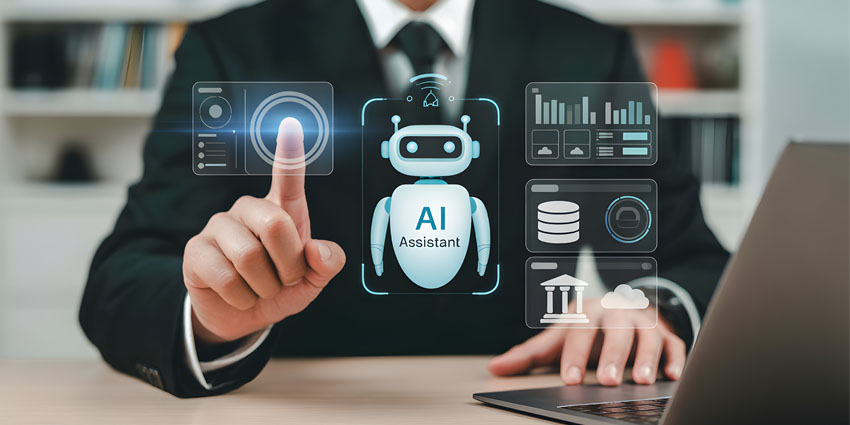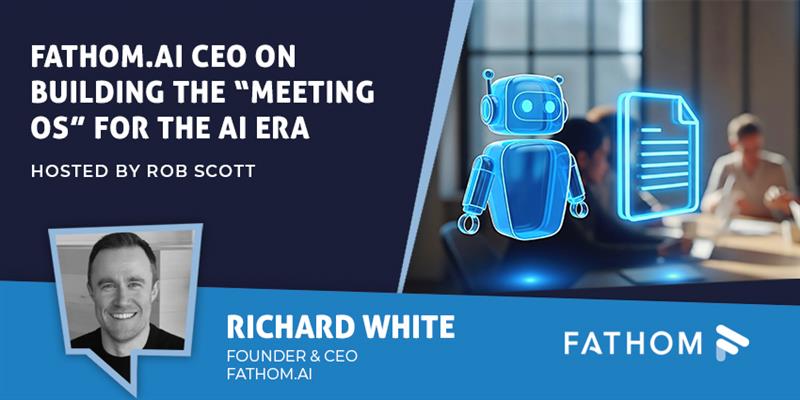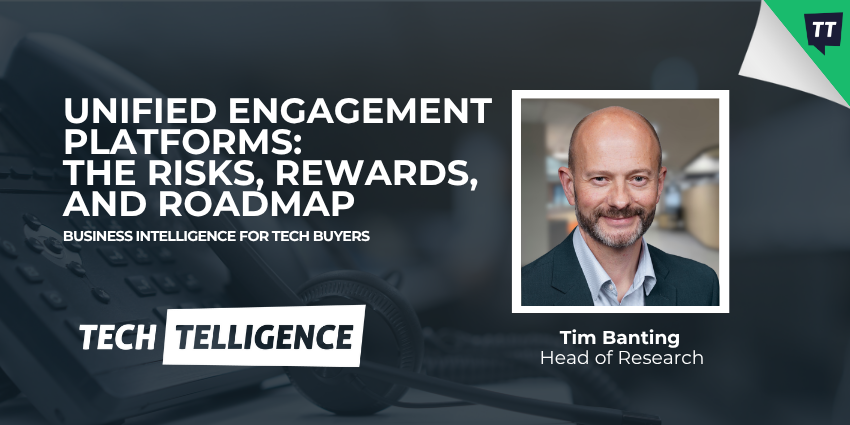Businesses are rediscovering the power of voice, and probably not in the way you’d expect. AI-enhanced programmable voice API use cases are stacking up, reshaping how companies serve customers and run operations.
From biometric fraud checks to real-time translation on international calls, voice is being reimagined as an intelligent, programmable layer within the broader CPaaS stack.
The scale of change is hard to ignore. Gartner expects 90 percent of enterprises to be running CPaaS by 2028, while market forecasts suggest a climb to $121 billion in value by 2034.
That growth isn’t about adding more channels for the sake of it. It’s about outcomes: lower average handle times, fewer missed healthcare appointments, faster triage, and measurable savings on fraud losses. What makes this wave different is programmability.
CPaaS automation means IT architects and CX leaders aren’t locked into a vendor’s fixed feature set. They can integrate AI into call flows where it matters most, whispering guidance to agents, routing logistics updates to drivers, or flagging compliance risks in real-time.
Voice has evolved from a commodity to a competitive advantage, and the most forward-thinking enterprises are already demonstrating what’s possible.
- CPaaS Workforce Engagement: Smarter Alerts for Frontline and Deskless Employees
- Closing the Loop with Real-Time Feedback: CPaaS for CX and EX Leaders
Programmable Voice API Use Cases Grow with AI
If programmable voice sounded like yesterday’s technology a few years ago, AI has given it a second life. The combination of AI-voice CPaaS platforms and new APIs is transforming what enterprises can do with a simple phone call.
Rising fraud, multilingual customer bases, and compliance complexity all demand communications that are more intelligent, faster to adapt, and easier to integrate with business systems.
What’s changed is programmability. Instead of accepting the canned options in a contact center platform, enterprises can use programmable voice APIs to embed AI into their own logic.
A retailer can run multilingual voice bots during peak shopping season without hiring dozens of temporary agents. A hospital can configure appointment reminders that adjust dynamically if the patient’s tone suggests confusion or distress. A bank can build fraud detection into every call, escalating automatically when the voiceprint doesn’t match.
Here are just some examples of programmable voice API use cases, enhanced by AI.
1. Agent Assist Whisper
Contact centers have been chasing “next best action” prompts for years. The difference with AI programmable voice API use cases is how deeply they can be tailored.
Instead of relying on whatever comes bundled with a CCaaS vendor, enterprises can inject their own AI models directly into live calls. Picture a new hire handling a customer dispute. With programmable APIs, an agent assist system can “whisper” real-time guidance into their ear: compliance reminders, suggested responses, or even contextual upsell prompts.
The model doesn’t just pull from a generic script; it can be trained on the company’s own data and integrated with CRM or knowledge base systems through CPaaS.
TruConnect, a mobile provider working with Five9, used AI whispering to reduce average handle time by nearly half a minute per call and decrease training overhead for new agents. At an enterprise scale, those seconds translate into millions of dollars in annual savings. When the workflow sits on CPaaS, it’s adjustable: finance firms can add compliance language, retailers can bias toward upselling, and healthcare organizations can prioritize empathy cues.
2. Fraud Detection & Voice Biometrics
Fraud in voice channels is a big issue. Traditional methods for tackling it, such as PINs and security questions, are slow, error-prone, and easy for malicious actors to bypass.
With programmable voice APIs, organizations can place biometric verification directly into their call flows. A voiceprint is captured during onboarding, then checked automatically whenever the customer returns. If the system flags anything unusual, CPaaS automation can launch a second-factor prompt or route the call to a live fraud analyst.
Financial services companies are leading the adoption here. 8×8, for example, has demonstrated how CPaaS-integrated voice biometrics reduce fraud exposure in high-risk transactions while maintaining a smooth customer experience. It’s not limited to banking. Insurers, healthcare providers, and even retailers with loyalty programs are starting to deploy voice verification at scale.
The real advantage is programmability. Fraud detection logic can differ by region, risk profile, or transaction type, and enterprises aren’t forced into a one-size-fits-all model. That’s the power of AI-voice CPaaS: security becomes a customizable workflow, not a blunt instrument.
3. Auto Call Summarization
Ask any contact center agent what slows them down, and “after-call work” is usually near the top of the list. Those extra minutes spent typing notes, tagging accounts, and updating records don’t just frustrate staff; they bleed capacity from the entire operation.
That’s where AI programmable voice API use cases start to grab attention. Instead of having agents write summaries by hand, voice streams can be transcribed in real-time, condensed into clean notes, and pushed directly into a CRM through CPaaS automation. The agent still has control; they can edit or approve the draft, but the grunt work disappears.
PKO Leasing’s deployment with Microsoft’s Azure Communication Services is a good example. By auto-generating post-call notes and syncing them with existing systems, the company slashed after-call work by nearly half. QA teams also received a valuable benefit: a searchable archive of conversations that enhanced compliance checks and coaching sessions.
4. Conversational IVR with AI Fallback
Everyone knows the pain of an IVR that drones on forever: “press 1 for billing, press 2 for…” and so on. Most callers either hammer zero or hang up. With AI voice CPaaS solutions, that entire experience can be rebuilt around natural conversation. Customers explain their needs in plain language, and the system uses intent recognition to handle routine issues or route the call intelligently.
The key difference with programmable voice API use cases is what happens when the AI isn’t confident. Instead of looping the caller back into another menu, CPaaS automation can escalate to a live agent and hand over a transcript of what’s already been said. The customer doesn’t have to repeat themselves, and the agent starts the conversation with context.
Microfinance provider BFREE proved how powerful this can be. Using Infobip’s programmable voice platform, it created an IVR that handled simple loan inquiries independently, while sensitive or unclear cases were automatically routed to human staff. The result: shorter wait times, more satisfied customers, and less pressure on the agent pool.
5. Real-Time Language Translation
For global businesses, language barriers are a significant hindrance to customer experience. Hiring multilingual agents at scale is expensive, and traditional interpreter lines are slow and clunky. A customer who has to repeat themselves through a third party usually isn’t a happy customer.
With AI-programmable voice APIs, translation can occur as the call unfolds. A CPaaS workflow streams audio through speech-to-text, feeds it into translation engines, and delivers a near real-time voice response back in the caller’s language. Because this sits on CPaaS, it can be layered into existing call flows instead of requiring a separate service.
Twilio and Vonage have both demonstrated live translation proof-of-concepts, and Vonage’s recent work with AWS shows how quickly accuracy and latency are improving. Imagine an airline agent in New York resolving a customer issue in Mandarin without hesitation, or a German logistics firm updating drivers across Eastern Europe without deploying multiple language teams.
CPaaS automation lets enterprises decide when and where translation is triggered: always for certain markets, on demand for others, or even just when sentiment analysis detects confusion.
6. Proactive Alerts with Sentiment Analysis
Most companies wait for the phone to ring before they act. That’s a problem when delays, outages, or health risks could be addressed sooner with a well-timed call. Proactive voice alerts change the dynamic, allowing businesses to reach out first.
This is where AI-programmable voice API use cases start to feel different. Outbound calls aren’t stuck reading scripts anymore. They can pay attention. By noticing tone and word choice as the call happens, the system can identify if someone is frustrated or unsure, then adjust course or transfer them to a person immediately.
In healthcare, that capability is proving valuable. CareMonitor, working with 8×8’s CPaaS platform, built automated check-in calls for patients managing chronic conditions. If someone gave a hesitant answer or sounded distressed, the system flagged it for a clinician to follow up.
The same pattern works beyond healthcare. A utility company can call customers during a service outage and detect when anger is rising, fast-tracking them to a human agent. A bank can reach out about suspicious activity, and if the caller sounds anxious, automatically route to a fraud specialist.
7. Compliance Recording + Transcription
When a bank or insurer picks up the phone, the call doesn’t end when the customer hangs up. Regulators expect a paper trail, and auditors want to know exactly what was said. The trouble is, most legacy call recording systems are blunt instruments: they capture everything, store it in a single location, and make retrieval a nightmare.
That’s changing with AI and programmable voice APIs. Instead of “record on, record off,” enterprises can build rules directly into the call flow. A financial services firm, for example, might choose to record only once a transaction is being discussed, or automatically blank out the seconds when a customer reads a credit card number. A healthcare provider could route transcripts to data centers in-region to stay on the right side of GDPR.
Platforms like Microsoft’s Azure Communication Services and Vonage’s compliance tools are already giving enterprises this kind of fine-grained control. What used to be a security risk is now an auditable, searchable archive.
8. Healthcare Reminders & AI Triage
Missed appointments are a significant drain on healthcare resources. In the NHS, no-shows amount to more than £ 1 billion every year. For smaller practices, those empty slots eat up scarce resources and keep other patients waiting longer for care.
By running reminders through AI voice CPaaS solutions, hospitals can make sure fewer of those slots go to waste. A programmable workflow can automatically call patients, confirm attendance, and even offer rescheduling on the spot. Because it’s built on APIs, the system can integrate directly with electronic health records, allowing updates to occur in real-time.
Cambridge University Hospitals, using Webex Connect, introduced automated reminders that cut missed appointments by 27 percent, and reduced pressure on staff. Some providers are going further. Mindd, a health startup working with Sinch, designed a voice assistant that asks simple triage questions before a patient even reaches the doctor.
9. Logistics Driver Updates + AI Routing
Logistics is one of those industries where a single missed call can ripple through an entire supply chain. A truck delayed at a depot can throw off warehouse scheduling, delivery windows, and even retail shelf space. Traditionally, updates came through dispatchers juggling radios, spreadsheets, and phone trees, not exactly built for real-time decision-making.
With AI-programmable voice, that friction disappears. A driver running late can trigger an automated update simply by speaking into their handset. The CPaaS workflow picks up the message, tags it with location data, and pushes alerts to all relevant parties: dispatch, warehouse, and end customers. Layer in AI routing, and the system can suggest detours or reshuffle delivery slots on the fly.
LINK Mobility has shown how this works at scale with messaging APIs, powering logistics updates for companies like DHL. Twilio customers have utilised similar programmable voice flows to keep customers informed when deliveries encounter issues.
10. Voice-Controlled Internal Ops Tools
Most people envision AI voice CPaaS solutions embedded in customer-facing scenarios, but some of the most interesting experiments are happening within the enterprise. Field engineers, warehouse staff, and IT service teams are beginning to use voice as an interface.
Imagine a technician on a factory floor, tools in hand and gloves on. Reaching for a tablet isn’t realistic. With a voice assistant powered by CPaaS, they can say what they need, log an update, raise a ticket, or pull up a schematic. The request runs through the workflow, connects to systems like ServiceNow or Microsoft Dynamics, and the answer is returned immediately.
ServiceNow has already piloted voice-driven ITSM workflows with Amazon Connect, while Microsoft has extended Teams’ walkie-talkie functionality into its field service tools. In both cases, the principle remains the same: when the interface is voice, work continues to move forward.
Getting Started with AI Programmable Voice API Use Cases
AI in voice isn’t about replacing people or rewriting every process at once. The enterprises that are getting results are the ones that start with something simple, prove the value, and then expand.
The easiest way to get going is to focus on a single workflow. Maybe it’s fraud checks in a call center, reminders for a clinic, or post-call notes for a sales team. Put it on an AI voice CPaaS platform, connect it to the tools you already use, and track the results that matter most: faster handling times, fewer no-shows, or reduced fraud. Success isn’t about how many calls the API handles but about whether the business sees a real improvement.
Once that first project shows results, it’s easier to justify the next one. That’s the promise of AI and programmable voice API use cases. With CPaaS automation, you’re not waiting on a vendor to ship the feature you need. You’re designing your own playbook, in your own time, and shaping voice as a strategic advantage instead of a forgotten channel.







